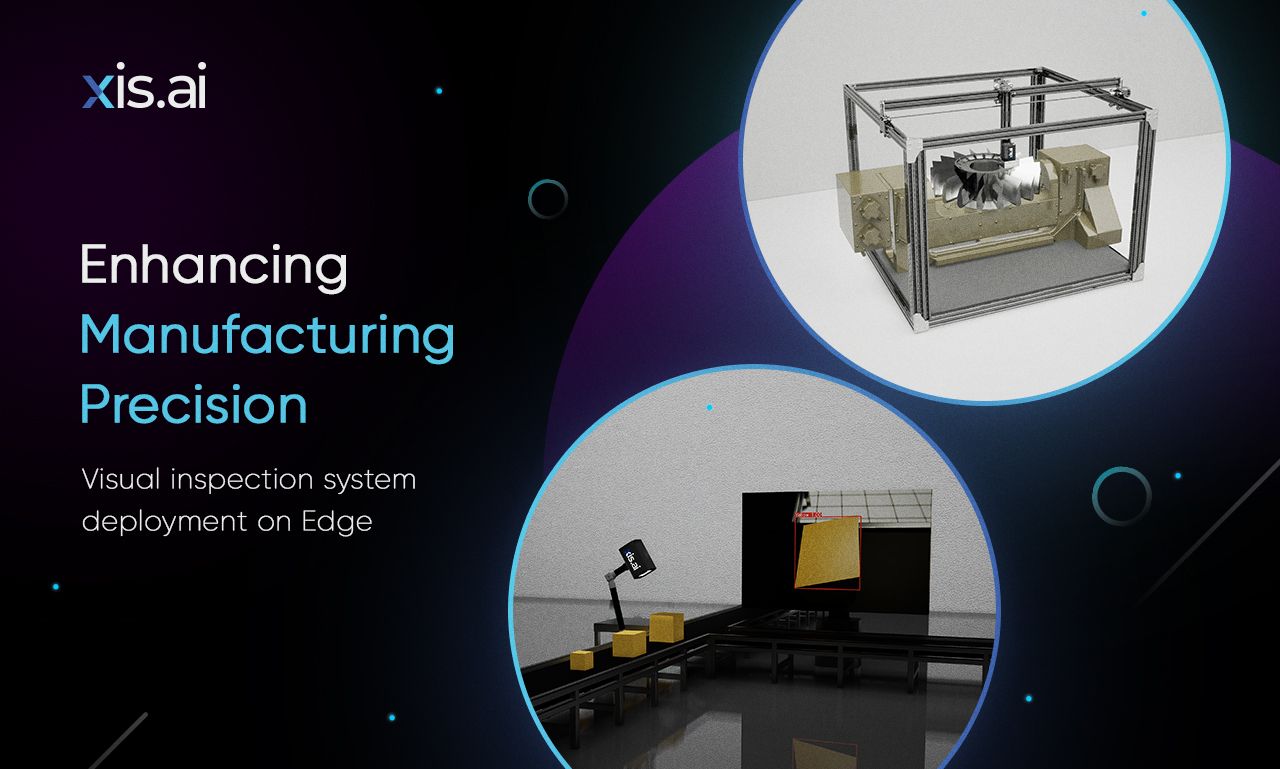Manufacturing precision receives a significant boost through Edge AI deployment in visual inspection systems. Edge AI deployment refers to the practice of deploying AI models and algorithms on edge devices, or local servers, rather than relying on cloud-based processing. This approach brings AI capabilities to where data is generated, which results in faster and more efficient processing, real-time analysis, and reduced dependence on internet connectivity.
It involves distributing resources and data storage to the network's edge where data originates. Embedded devices, such as smartphones, IoT devices, cameras, and drones, serve as platforms for deploying AI models.
Edge AI bridges the gap between automation and the cloud. Traditionally, data went to the cloud for analytics. Now, with Industrial Edge, you can do this directly at the plant or machine level.
Benefits of Edge AI
1 . Real-Time Decision-Making
Edge AI enables instant decision-making by processing data at the source. This is crucial in time-sensitive applications such as infrastructure inspection, where drone imagery can be analyzed on the fly to provide immediate responses to maintain critical environments.
2. Enhanced Privacy and Security
By processing data locally, edge AI ensures that sensitive information remains within the edge devices, reducing the risk of data breaches during transmission. This makes it suitable for applications where privacy and security are paramount, such as surveillance systems and healthcare.
3. Reduced Bandwidth Requirements
Edge deployment minimizes the need for transmitting large volumes of data to remote servers, resulting in reduced bandwidth requirements. This is advantageous in scenarios with limited network connectivity, or high costs associated with data transfer, such as remote industrial sites or rural areas.
4. Resource-Constrained Environments
Edge AI is particularly beneficial in resource-constrained environments where access to powerful cloud servers may be limited. By leveraging the computational capabilities of edge devices, industries like agriculture, oil and gas, and manufacturing can analyze visual data locally and make real-time decisions without relying on constant internet connectivity.
5. Industrial Automation and Quality Control
Edge AI finds extensive use in industrial automation, where it enables real-time monitoring and analysis of manufacturing processes. By detecting anomalies, defects, or quality issues on the assembly line, it helps improve efficiency, reduce downtime, and enhance overall product quality.
Edge AI Technology in Visual Inspection Systems in the Manufacturing Industry:
Worldwide manufacturers have initiated the integration of edge AI technology to optimize and enhance the productivity of their manufacturing operations. Visual Inspection Systems can identify and detect anomalies and promptly notify management about crucial repairs, enabling timely resolution and preventing operational downtime.
Edge AI can also be applied to other areas of need in this industry, such as quality control, worker safety, yield optimization, supply chain analytics, and floor optimization.
Steps for Implementation
1. Problem Definition:
Define the specific visual inspection task to automate, such as defect detection, quality control, or object recognition.
2. Data Collection and Annotation:
Gather a diverse set of labeled images or videos relevant to the inspection task, including labels for different defect classes or objects.
3. Model Selection and Training:
Choose a suitable deep learning model architecture, such as CNNs or RNNs, and train it using the annotated dataset to recognize defects or objects of interest.
4. Model Optimization:
Optimize the trained model for deployment on edge devices, employing techniques like quantization, pruning, or model compression to reduce size and computational requirements while maintaining accuracy.
5. Integration with Edge Devices:
Choose edge devices with sufficient computational power, memory, and compatibility with the selected AI framework (e.g., TensorFlow Lite, ONNX Runtime). Deploy the optimized AI model onto selected edge devices by converting it to a format compatible with the hardware and software environment.
6. Real-time Inference and monitoring:
Implement real-time inference on edge devices by capturing live video or images, processing them using the AI model, and making decisions or generating alerts based on inspection results.
xis Suite
xis Suite is a no-code, end-to-end visual inspection system designed for seamless integration with existing manufacturing machines. It offers both edge AI and cloud-based defect detection systems, analyzing high-resolution images in real-time using AI algorithms to accurately identify and classify defects.
With a camera and no code computer vision platform that enables non-technical industrial users to develop, deploy, and use automated visual inspection (AOI) in any industry in minutes. With our solution, businesses can swiftly develop and customize AI solutions independently, establishing a secure foundation that minimizes risks and optimizes costs while driving revenue growth. The suite includes AI-assistive labeling and active learning algorithms for fast, efficient processes.



